|
 |
 |
|
KTB currently have several immediate on-going research projects underway. KTB will continue to initiate and sponsor any research project that brings us a step closer to resolving the cane toad problem. 1. Lungworm parasite control
KTB continue to work with and encourage researchers in this and other related fields looking for a biological solution to the cane toad problem. 2. Pygmy Crocodile Research. Essentially this on-going research is to monitor one ientified Pygmy Crocodile habitat system, and to monitor the impact of the canetoad on the Pygmy crocodile population in this system once toad arrived and then established. Herpetologist Lyall Grieves (MPhil Macq Uni) is assisting KTB in this research project. 3. Impact of cane toad on small vertebrate's. Lyall Grieves has been researching reptile biodiversity and the impacts of the Cane Toad with the assistence of KS and KTB since 2006. His research to date has indicate a stronge reduction in small reptile diversity. 4. Impact on invertebrate's. This KSR and KTB on-going research projects has been an analysis of canetoad stomach contents. Katie from New Mexico University has been assisting with this research. A GIS system is being designed to correlate this data effectively and to make it available to researchers. 5. Audio cane toad catching/attractant An auditory attractant could increase toad busting effectiveness. KTB volunteers have been 6. Understanding cane toad invasion mechanics Kimberley Toad Busters have been recording cane toad data from September 2005. For each location visited this data includes cane toad bust data (no. caught, sex and length), cane toad abnormalities, animal observations (dead/alive), stomach contents data, Lungworm parasite (presence/absence), cane toad breeding (metamorph/tadpole eradication) and general weather observations. The majority of this data has been recorded in the field manually using field data sheets and then entered into Excel spreadsheets. The other form of data is written field trip report for each toad bust by the Team Leader. Much of this information is regularly up-dated in KTB Newsletters. This data also includes all reconnaissance trips and presence and absence of cane toads. A GIS system is being designed to correlate this data effectively and to make it available to researchers. This program is designed to empower community to record native bioidiversity pirior to and after cane toads have arrived in an area in order to monitor and record this impact. Schools, community groups and Industry across the Kimberley have embraced this program. A GIS database system is being designed to correlate this data effectively and to make it available to researchers. 8. ICON species monitoring project This KTB program is designed to monitor some our popular iconic species in the Kimberley that are expected to suffer 90-100% decline in population within 2 years of arrival of the Cane Toad Monitoring of a site registered with Kimberley Toad Busters during four set monitoring periods a year will provide standardised scientific data to record the impact of cane toads on these species. 9. Trailing and describing safe handling and humane safe disposal of all stages of the cane toad Kimberley Toad Busters have developed an easy to ready comprehensive Identification Chart for differences between Cane Toads and Native Frogs. A new brochure for residents of Kimberley has been created covering cane toad identification, methods of cane toad control for your backyard, methods of safe handling and euthanasia, treatment of dogs and impacts on wildlife (link) KTB have developed a Standard Operating Procedure for euthanasia of Cane Toads by Exposure to Carbon Dioxide 10.Support requests from biodiversity or cane toad researchers for field support or samples Requests for field support, samples or data are regular for Kimberley Toad Busters • Sean Doody: Monash University • Adam Parsons • Ben Phillips: Australian Wildlife Conservancy |
|





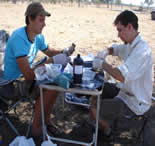
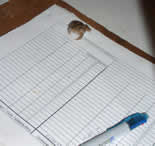
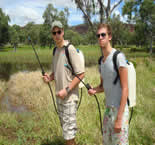
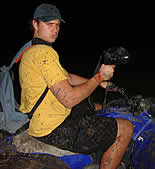
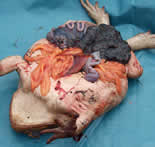
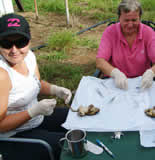
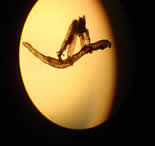
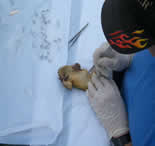
.jpg)

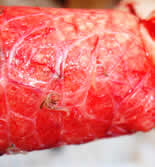
.jpg)